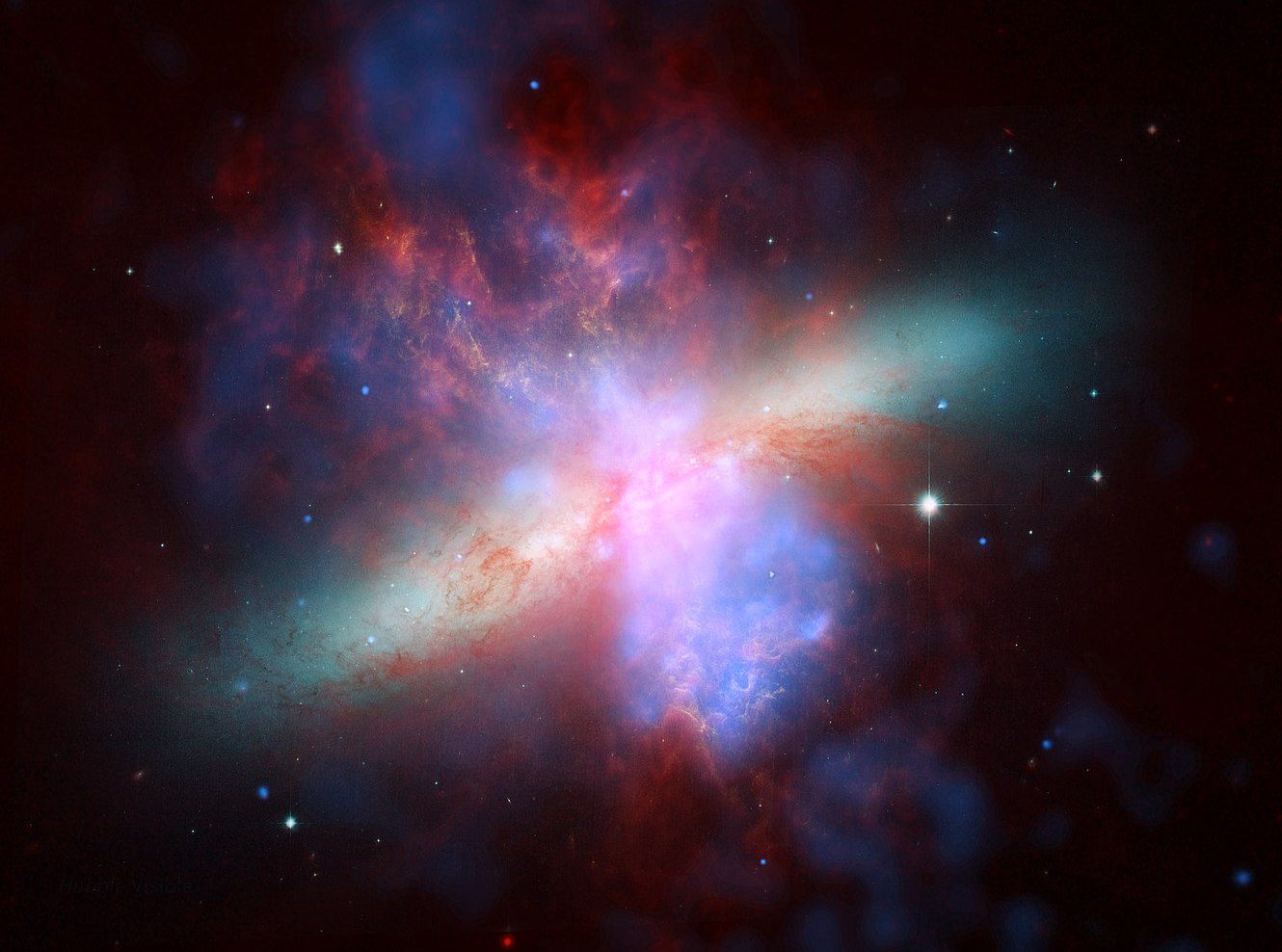About Irregular Galaxy
- An irregular galaxy is a galaxy that does not have a distinct regular shape, like a spiral or an elliptical galaxy.
- They range from dwarf irregular galaxies with 100 million times the Sun’s mass to large ones weighing 10 billion solar masses.
- They also contain abundant amounts of gas and dust.
- Formation: There are many ways in which an irregular galaxy can be formed.
- For example, one can result from a collision between galaxies. When this happens, gravitational forces between separate galaxies interact, which causes an irregular type of rotation.
- A young galaxy can also take an irregular form, suggesting that it has not yet reached a symmetrical rotation.
- Irregular galaxies born from galaxy interactions or collisions typically host a mix of older and younger stars.
Key Facts about ESO 300-16
- It is an irregular galaxy located at a distance of 28.7 million lightyears in the southern constellation of Eridanus.
- It is made of many tiny stars all clumped together, surrounded in a diffuse light. In the central, brightest part there is a bubble of blue gas.
- The galaxy is surrounded by mostly very small and faint objects, though there are bright stars above and to the left of it, and a string of galaxies nearby.
Hubble Space Telescope
- It was built under the supervision of the National Aeronautics and Space Administration (NASA) of the United States and was named after Edwin Hubble, the foremost American astronomer of the 20th century.
- The HST was placed into orbit about 600 km (370 miles) above Earth by the crew of the space shuttle Discovery on April 25, 1990.
- It is considered by many to be the most important scientific tool ever to be built, having churned out more than 15 lakh observations that have been used to publish around 18,000 research papers.
- It is larger than a school bus in size, has a 7.9 feet mirror, and captures stunning images of deep space playing a major role in helping astronomers understand the universe by observing the most distant stars, galaxies and planets.
Q1) What is a Lightyear?
Light-year is the distance light travels in one year. Light zips through interstellar space at 186,000 miles (300,000 kilometers) per second and 5.88 trillion miles (9.46 trillion kilometers) per year.We use light-time to measure the vast distances of space.
Source: Hubble Space Telescope captures image of irregular galaxy ESO 300-16
Last updated on December, 2025
→ Check out the latest UPSC Syllabus 2026 here.
→ Join Vajiram & Ravi’s Interview Guidance Programme for expert help to crack your final UPSC stage.
→ UPSC Mains Result 2025 is now out.
→ UPSC Notification 2026 is scheduled to be released on January 14, 2026.
→ UPSC Calendar 2026 is released on 15th May, 2025.
→ The UPSC Vacancy 2025 were released 1129, out of which 979 were for UPSC CSE and remaining 150 are for UPSC IFoS.
→ UPSC Prelims 2026 will be conducted on 24th May, 2026 & UPSC Mains 2026 will be conducted on 21st August 2026.
→ The UPSC Selection Process is of 3 stages-Prelims, Mains and Interview.
→ UPSC Result 2024 is released with latest UPSC Marksheet 2024. Check Now!
→ UPSC Prelims Result 2025 is out now for the CSE held on 25 May 2025.
→ UPSC Toppers List 2024 is released now. Shakti Dubey is UPSC AIR 1 2024 Topper.
→ UPSC Prelims Question Paper 2025 and Unofficial Prelims Answer Key 2025 are available now.
→ UPSC Mains Question Paper 2025 is out for Essay, GS 1, 2, 3 & GS 4.
→ UPSC Mains Indian Language Question Paper 2025 is now out.
→ UPSC Mains Optional Question Paper 2025 is now out.
→ Also check Best IAS Coaching in Delhi

















